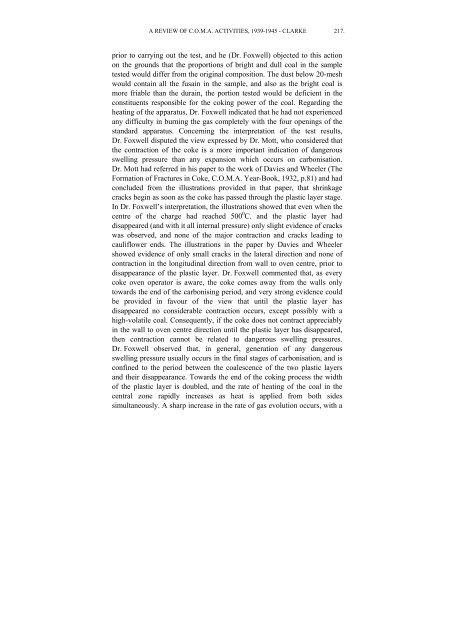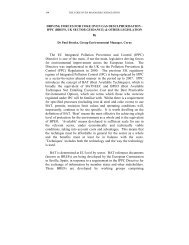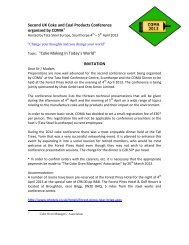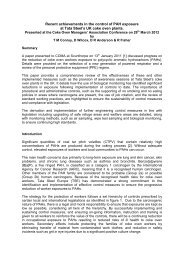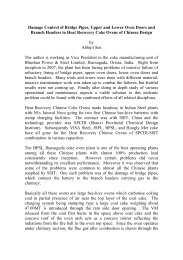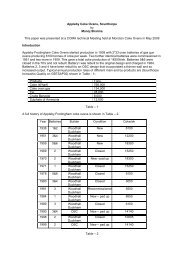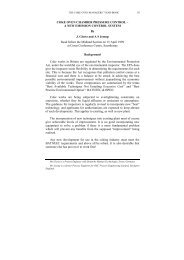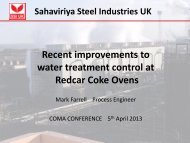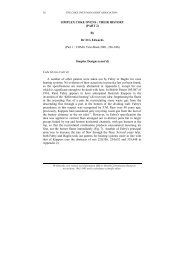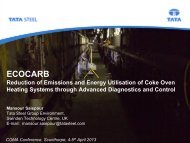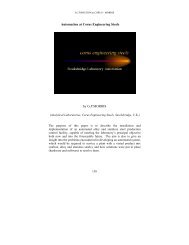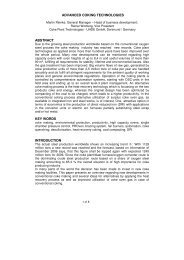CHAIRMAN'S ADDRESS - Coke Oven Managers Association
CHAIRMAN'S ADDRESS - Coke Oven Managers Association
CHAIRMAN'S ADDRESS - Coke Oven Managers Association
- No tags were found...
You also want an ePaper? Increase the reach of your titles
YUMPU automatically turns print PDFs into web optimized ePapers that Google loves.
A REVIEW OF C.O.M.A. ACTIVITIES, 1939-1945 - CLARKE 217.prior to carrying out the test, and he (Dr. Foxwell) objected to this actionon the grounds that the proportions of bright and dull coal in the sampletested would differ from the original composition. The dust below 20-meshwould contain all the fusain in the sample, and also as the bright coal ismore friable than the durain, the portion tested would be deficient in theconstituents responsible for the coking power of the coal. Regarding theheating of the apparatus, Dr. Foxwell indicated that he had not experiencedany difficulty in burning the gas completely with the four openings of thestandard apparatus. Concerning the interpretation of the test results,Dr. Foxwell disputed the view expressed by Dr. Mott, who considered thatthe contraction of the coke is a more important indication of dangerousswelling pressure than any expansion which occurs on carbonisation.Dr. Mott had referred in his paper to the work of Davies and Wheeler (TheFormation of Fractures in <strong>Coke</strong>, C.O.M.A. Year-Book, 1932, p.81) and hadconcluded from the illustrations provided in that paper, that shrinkagecracks begin as soon as the coke has passed through the plastic layer stage.In Dr. Foxwell’s interpretation, the illustrations showed that even when thecentre of the charge had reached 500 0 C. and the plastic layer haddisappeared (and with it all internal pressure) only slight evidence of crackswas observed, and none of the major contraction and cracks leading tocauliflower ends. The illustrations in the paper by Davies and Wheelershowed evidence of only small cracks in the lateral direction and none ofcontraction in the longitudinal direction from wall to oven centre, prior todisappearance of the plastic layer. Dr. Foxwell commented that, as everycoke oven operator is aware, the coke comes away from the walls onlytowards the end of the carbonising period, and very strong evidence couldbe provided in favour of the view that until the plastic layer hasdisappeared no considerable contraction occurs, except possibly with ahigh-volatile coal. Consequently, if the coke does not contract appreciablyin the wall to oven centre direction until the plastic layer has disappeared,then contraction cannot be related to dangerous swelling pressures.Dr. Foxwell observed that, in general, generation of any dangerousswelling pressure usually occurs in the final stages of carbonisation, and isconfined to the period between the coalescence of the two plastic layersand their disappearance. Towards the end of the coking process the widthof the plastic layer is doubled, and the rate of heating of the coal in thecentral zone rapidly increases as heat is applied from both sidessimultaneously. A sharp increase in the rate of gas evolution occurs, with a


